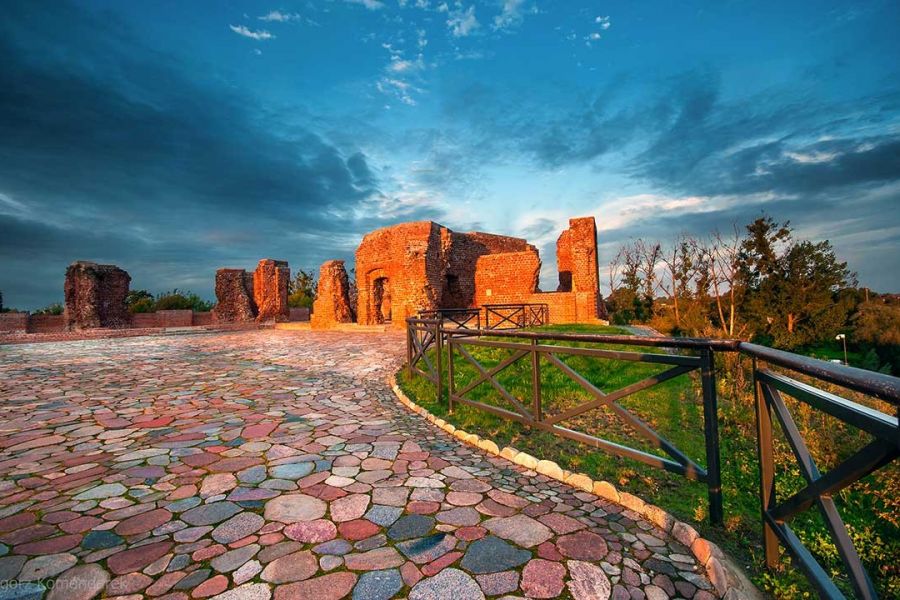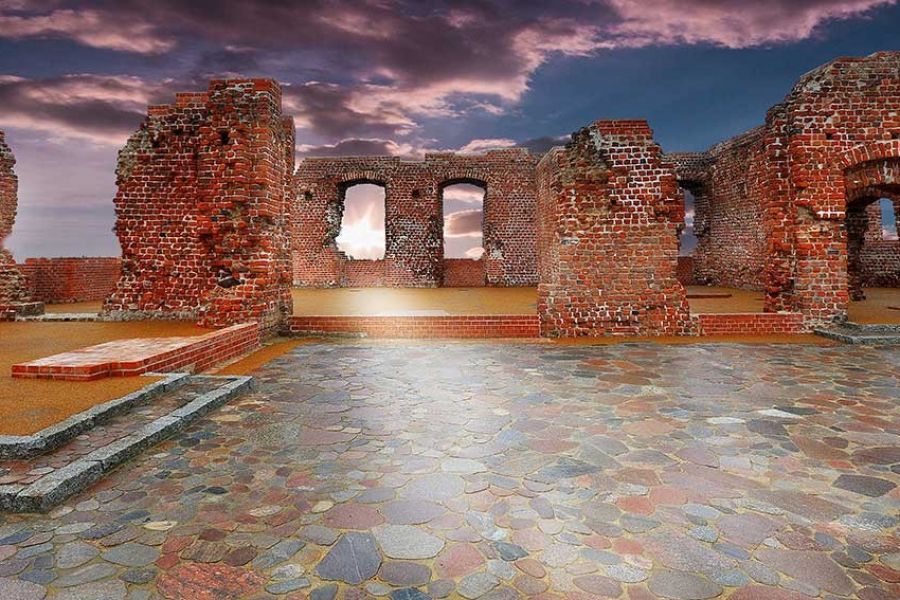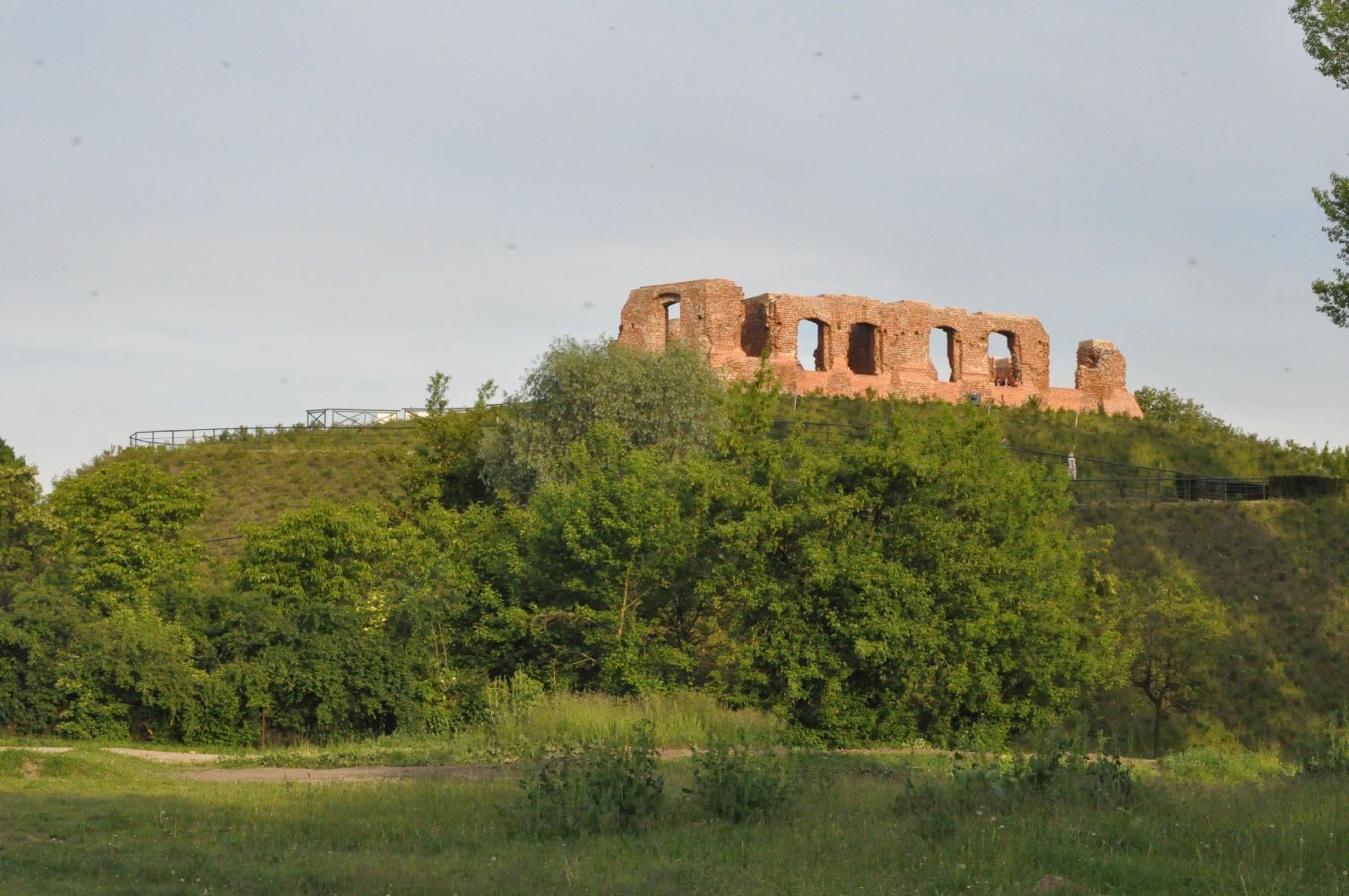The ruins of the castle of the Mazovian princes in Sochaczew
Today, the castle in Sochaczew is only a picturesque, spatially illegible ruin. He did not live to see any elaboration of his history, and information about him is difficult to access. There are also no iconographic sources that could tell us anything about the appearance of the castle and its meaning. This creates an aura of mystery around the ruin. Local legends spoke of underground corridors so wide that a horse and cart could pass through them, and so long that they connected the castle with the Dominican church in Sochaczew, with the church in nearby Trojanów, and even with the monastery located several dozen kilometers away, on the other side of the Vistula in Czerwińsk. 
Sochaczew, a town located on the right, high bank of the Bzura River, is one of the oldest towns in Mazovia. The first source mention of the city is quite early, but controversial. He tells us that in 1138 Prince Bolesław III Krzywousty died in the local Benedictine monastery of the Holy Trinity. It is given in the manuscript of the Sochaczew Codex Ronika Świętokrzyski Nowy, which dates back to the years 1463-1464, i.e. much later. The first reliable information about the village is the record of the castellan of Sochaczew named Falanta from 1221. 
This hill is of glacial origin and is located to the south of the higher terrace of the riverside escarpment on which the city was founded. The town terrace was, and still is, separated from the castle hill by a deep ravine of a stream which soon flows into the Bzura, creating a pool here. From the south and east, the castle mountain, due to the lack of natural defensive conditions, was separated from the further part of the escarpment by a deep moat filled with water from the aforementioned stream. These conditions made the Sochaczew town, and then the castle, a defensive place. 
The date of construction of the castle is unknown and is a matter of dispute. Some researchers shift it to the second half of the 14th century or even to the beginning of the next century, but the view promoted by M. Brykowska, J. Piniński, I. Galicka and J. Gula, who opt for the middle of the 14th century, seems to be the most correct. This opinion seems to be the most convincing due to the fact that they put forward their conclusion, as it seems, on the basis of premises coming from both source knowledge and archaeological excavations. The manuscript basis in this case is the Kalisz document of December 27, 1355, which mentions the Sochaczew castle among other towns/castles in Mazovia. While in the case of other towns it can be safely assumed that the Latin term castrum (castle) may refer to wooden and earthen strongholds, in the case of Sochaczew such a stronghold cannot be mentioned. Therefore, because archeology clearly states that after the destruction of the wooden stronghold in 1286, no attempt was made to rebuild it until the time of the brick castle, and the existence of a second stronghold in the city, as described above, has not been confirmed. 

This theory is confirmed by the approximate dating of the pottery to some half of the 14th century. This hypothesis would make the castle in Sochaczew one of the oldest stone strongholds in Mazovia (next to Płock, Warsaw, Rawa and Łowicz). The history of the castle, both in terms of its political history and architectural changes, can be divided into two periods:
due to political history:
from the mid the fourteenth century to 1476 (the date of incorporation of the Sochaczew land into the Crown) - the castle was one of the seats of the Mazovian princes,
from 1476 to 1794 - the castle was a royal station and the seat of the city starost;
due to architectural changes:
from the mid 14th century to around 1608 - late medieval castle,
from around 1608 to 1794 - a modern castle, probably of a late Renaissance, Mannerist or early Baroque character. 
